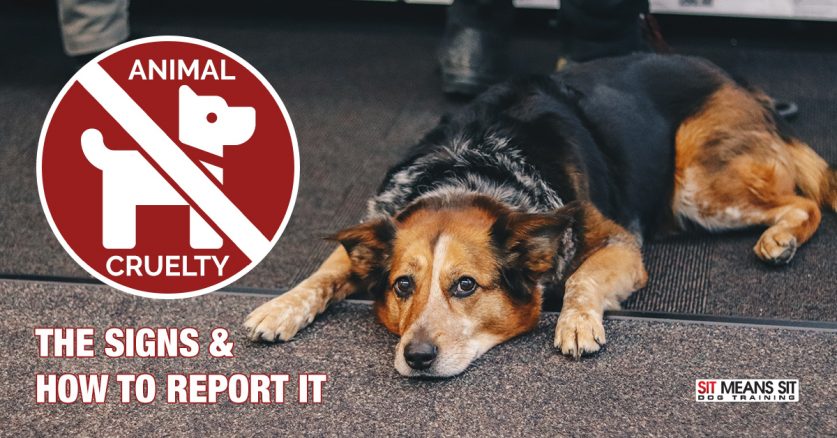
The Signs of Animal Cruelty and How to Report It
There are laws against animal cruelty – all of them containing felony provisions. But it’s hard for a law to be enforced when it’s not being acknowledged or reported. There are canine companions out there who rely on people just like you to protect them from animal abuse. To help, here’s information on the signs and the steps to take.
What is Animal Cruelty?
Animal cruelty usually comes in two forms, neglect being the majority of reports and direct abuse & violence occurring far less. Knowing what both of these look like and learning the best way to help our canine friends is our intent with this article. The definition of neglect is the failure to provide basic needs for a dog to live a healthy life. Direct abuse is the physical attack on an animal, and should always be reported to law enforcement due to its common link with other patterns of violence.
Different Types of Neglect
There are various ways an owner can neglect their dog. If you ever suspect a pup is being neglected but aren’t quite sure, contact the local officials Humane Society so they can determine if the situation is one of cruelty or not. Here are the most common types of neglect you’ll see and should look out for.
- Hoarding: An extreme hoarding behavior has a direct effect on anyone living in the house, including dogs. Those who suffer from hoarding disorder often neglect their animals by not providing enough room to live a healthy life due to the overtaking of space. Another type of hoarding can be animal hoarding, which is housing far more animals than one can take care of or has the room for.
- Insufficient Shelter: During extreme high or low temperatures, fatal injuries can quickly occur in dogs if not given the proper shelter. If you ever notice an animal being neglected in the heat or cold, make sure to document it with a camera, if possible. Reporting this behavior is crucial because of how quickly it can cause death in canine.
- Lack of Veterinary Care: Any untreated wounds you see on a pup should immediately raise red flags in your mind. Untreated diseases are harder to detect but should still be looked out for in hair loss and scabbing in a dog.
- Abandonment: More often than you’d think, people move out of their homes and carelessly leave their dogs behind. Sometimes you may be able to detect this from a howling dog in a house that seems vacant, or you know someone moved out of recently. If you ever notice someone moving suddenly, keep an eye out to ensure their vacant home is truly empty. Sadly many times desperate folks abandon their pets in hopes that they will be saved.
Different Types of Abuse
- Physical Abuse: Witnessing direct physical violence towards an animal can be extremely traumatizing, but reporting it to authorities as soon as you can is crucial. If you’re thinking of intervening, make sure to use proper judgment on the situation by not using any physical force. You could jeopardize the whole investigation.
- Organized Cruelty: The thought of organized cruelty, such as dogfighting, is disturbing and horrifying to a loving dog owner – but it’s important to remember that it doesn’t mean it’s not happening. It can be hard to believe, but it may be happening in your area without you even being remotely aware. If you overhear or witness anything even remotely related to this, immediately report it.
How to Report Suspected Abuse
Now that we’ve given you some of the most prominent examples of animal cruelty, it’s vital you know how to report it accurately. Depending on the level of urgency in the situation, you’ll want to call either you Local Island Animal Control: Humane Society or 9-1-1.
Any reports of animal cruelty are required to be investigated, and if you have any documentation, be sure to have as much information as possible. Dates, times, specific details, photos, or even footage could help a case more than you may realize.
Remember, it is always best to allow the proper authorities to do their part, so in the interest of safety, our role is to make the contact and leave the dialogs and investigations, to the proper agencies. We all know that things can get heated very quickly when judgment is passed on the care for both four legged and two legged family members.
